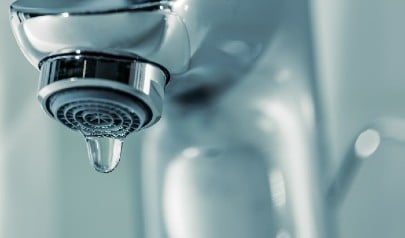Just how to avoid a Water Damaged Bathroom
Just how to avoid a Water Damaged Bathroom
Blog Article
How do you actually feel in relation to Preventing Water Damage in the Bathroom?

The washroom is extremely prone for moist accumulation and potential water damage because of the regular use of water in it. This post uses basic examination methods to assist finding water damage risks.
The regular use water in the shower room makes it exceptionally at risk for moist accumulation and potential water damage. By examining it on a regular basis, you can lower water relevant damages.
The following set of inspections is easy to perform and should be done once in every three months in order to maintain your restroom in good shape and also to stop prospective water problems triggered by the bathtub, the shower, pipe joints and also plumbing, sinks, closets, as well as the bathroom
Do not overlook performing these examinations as well as be complete while doing them. Keep in mind that these straightforward examinations can conserve you a great deal of money by offering early indications for water damages
Sinks and also Cabinets
Sinks as well as cupboards are exposed to moisture and also moisture everyday as well as are typically overlooked. Evaluate consistently under the sink as well as on the countertop above it. Fix any type of drip in the trap as it may recommend drain problems. Check out the sink, slow draining pipelines might indicate an obstructed drain. Change sink seals if they are split or loose.
Bath tub as well as Shower
The shower and also tub require special focus as well as maintenance. Examine the floor tiles as well as replace if split. Ensure that there is no missing cement between the tiles. Check as well as change split caulking at joints where the walls fulfill the floor or the bathtub. Obstructed drains and also pipes problems will certainly avoid the bath tub from drying and might indicate significant issues beneath the tub. Speak with a specialist right away to prevent architectural damage. Focus on discolorations or soft locations around the bathtub wall surfaces as they may suggest an internal leakage.
Plumbing
Signs for water damage are difficult to detect considering that most pipelines are installed inside the wall surfaces.
Pay special interest to floor covering as well as wall surfaces moisture as well as stains as they may show an unnoticeable plumbing trouble. Check dampness levels in adjoining areas as well.
The Toilet
The toilet is a susceptible water joint. Examine the water lines and search for leakages around the commode seat, in the hose, and under the water storage tank. If you identify any indications of wetness on the flooring around the commode, look for leaks in the toilet rim as well as container seals.
Be aware that hanging bathroom dish deodorants enhances the opportunities for clogs.
How to Prevent Water Damage in Your Bathroom?
Water damage repair is an expensive, meticulous, and lengthy process. Unfortunately, bathrooms are the most susceptible rooms to water damage due to toilets, showers, and sinks. Pipes and fixtures wear out over time and are not immune to damage. But all is not lost, as there are ways to prevent water damage from occurring in your bathroom.
Check Your Plumbing
Nothing lasts forever, especially pipes, which can rust and begin leaking over time. You should periodically conduct pipe inspections and pay attention for any musty smells or water stains that may indicate you need water damage repair. Here are some things to check:
Frequently test valves for your toilet, shower, and sink to ensure they are properly working. Check faucet supply lines hidden under vanities and replace when needed. Replace cracked or deteriorating caulking along sinks, tubs, and showers. If you notice a clog in your sink, call in a professional. Since you can’t check the pipes in the wall, keep an eye out for stains, drywall bubbling, musty smells, and excess moisture; if the bathroom is on a second level, check the ceiling of the room directly below for these signs. Don’t Overwork Your Toilet
One of the most common reasons bathrooms need water damage repair is due to overflowing toilets. Save yourself the hassle of cleanup by being mindful and not pushing your toilet to extreme limits. If you have young children, it is especially important to keep an eye on them when they are in the bathroom and to teach them how to avoid clogging the toilet. Here are some more tips to help prevent your toilet from overflowing:
If you have a septic tank, only use septic-safe toilet paper Do not flush anything down the toilet besides toilet paper; items like diapers and sanitary napkins will clog the piping Pay attention to your toilet’s water level: If it’s low, it could mean it is partially clogged or that there is a crack in the toilet bowl Maintain Your Shower/Tub
Replace showers or tubs with cracks or other damage; even hairline cracks can allow water to seep in and cause damage. Grout and caulk help prevent water from seeping into walls and floors, so repair them if they are chipped, cracked, or deteriorating. Replace torn shower curtains or shower doors with seals that no longer work. Dry the floor and drain water from the tub immediately after use to prevent damage from sitting water. https://www.alure.com/home-improvements-blog/resources/how-to-prevent-water-damage-in-your-bathroom

I stumbled upon that piece about Looking for Signs of Water Damage in the Bathroom when browsing the web. Liked our blog entry? Please share it. Let another person discover it. I treasure reading our article about How to Repair and Prevent Bathroom Water Damage.
Schedule A Service Call Report this page